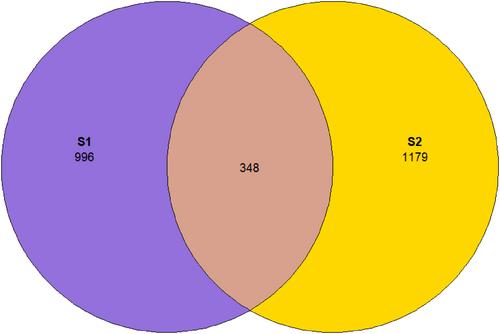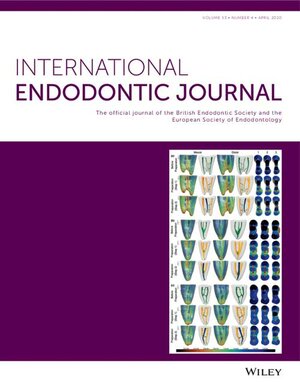Impact of root canal disinfection on the bacteriome present in primary endodontic infection: A next generation sequencing study
Abstract
Aim
To investigate the bacteriome present in teeth with primary endodontic infection (PEI) and apical periodontitis (AP) and to determine quantitatively and qualitatively the impact of chemomechanical preparation (CMP) using 2.5% sodium hypochlorite NAOCl on the bacteriome found in PEI with AP using the Illumina MiSeq platform.
Methodology
Thirty-six paired samples from 18 patients were successfully sequenced and analysed. Samples were collected at two sampling times: before (s1) and after (s2) CMP using 2.5% NaOCl. The DNA was extracted from s1 and s2 samples and quantified using quantitative PCR (qPCR). All 36 samples were sequenced using the Illumina MiSeq platform. Raw V3–V4 amplicon sequencing data were processed with the DADA2 pipeline to generate amplicon sequence variants (ASVs). Alpha diversity metrics representing abundance (Chao1) and diversity and evenness (Shannon, Simpson) were computed. The paired-sample Wilcoxon's test was used to compare alpha diversity metrics and qPCR counts between s1 and s2. The PERMANOVA method (with 999 permutations) was applied to compare community composition between sample types (s1 versus s2) and between patient IDs. ALDEx2 (ANOVA-like differential expression tool for high-throughput sequencing data) to investigate differentially abundant taxa between s1 and s2. A paired-sample Wilcoxon's test was used to compare alpha diversity metrics and qPCR counts between s1 and s2.
Results
The qPCR counts were significantly higher in s1 compared to s2 (p = .0007). The Chao1 index indicated no difference in alpha diversity (p < .7019); whereas Shannon (p = .0056) and Simpson (p = .02685) indexes showed higher values in s2. The PERMANOVA test using Adonis2 showed a significant effect of sample time on community composition (R2 = .0630, p = .012). Patient ID also showed a significant effect on community composition (R2 = .6961, p = .001). At the genus level, Dialister, Mogibacterium, Prevotella, and Olsenella were differentially enriched at s1, while Actinomyces, Stenotrophomonas_unclassified, Enterococcus_unclassified, and Actinomyces_unclassified were differentially enriched in s2.
Conclusion
The bacteriome present in teeth with PEI with AP is complex and diverse. CMP using 2.5% NaOCl showed a high quantitatively and qualitatively disinfectant impact on the bacteriome present in PEI with AP.


 求助内容:
求助内容: 应助结果提醒方式:
应助结果提醒方式:


